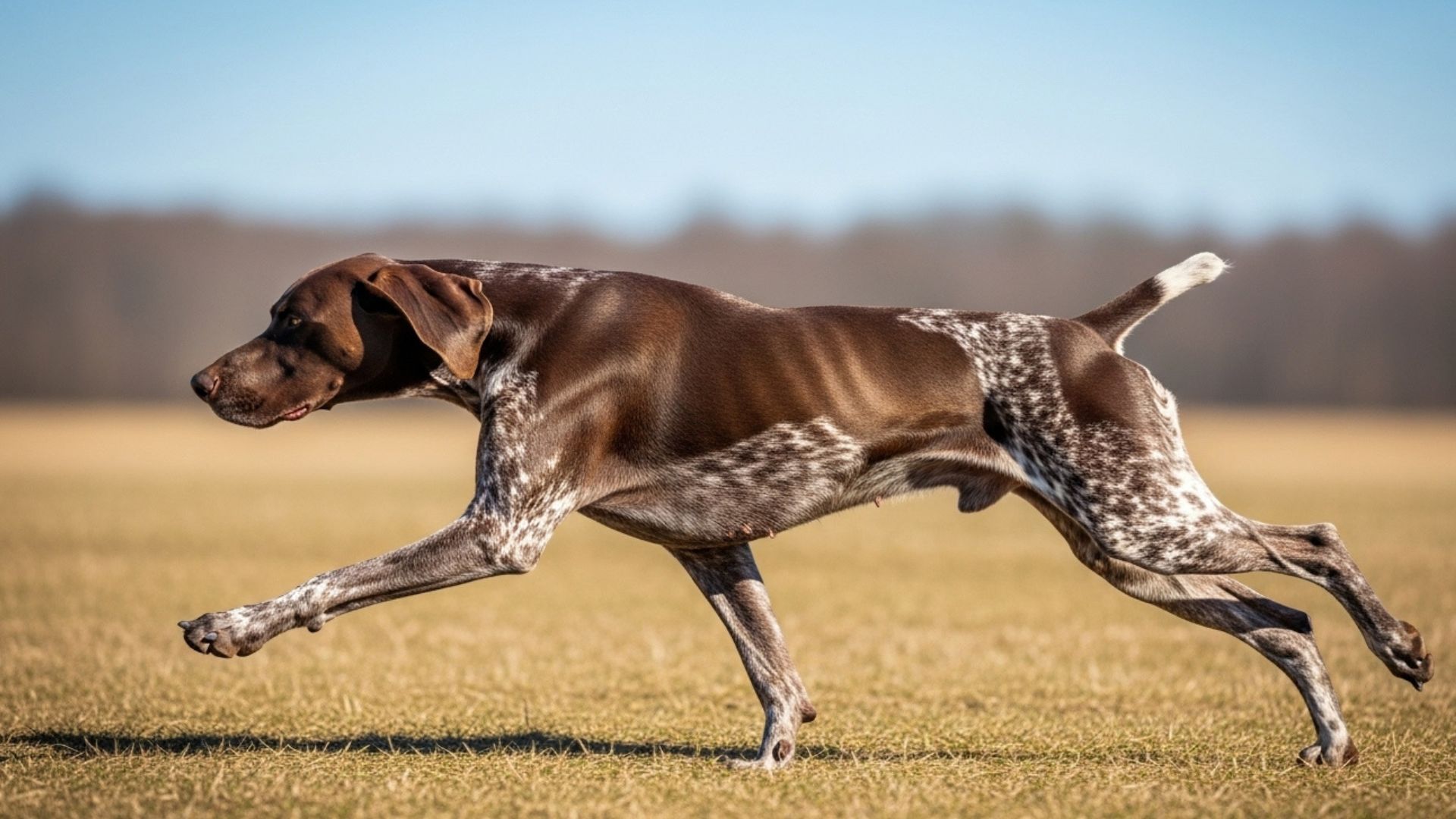Every dog carries a spark of instinct deep within them; an ancestral urge to chase, hunt, and capture. This natural impulse, known as prey drive, varies from one breed to another and shapes how a dog reacts to movement in its environment.
For some, it’s a mild curiosity; for others, it’s a lightning-fast pursuit that feels hardwired into their nature, a living reminder of their wild origins.
Research shows that all modern dogs share a common ancestor with a now-extinct Eurasian wolf species. Genetic evidence suggests this split occurred between 15,000 and 30,000 years ago, when early wolves began living alongside humans.
Over time, selective breeding amplified traits like hunting, herding, and tracking, giving rise to the strong prey instincts seen in many breeds today.
While a high prey drive can challenge inexperienced owners, it also highlights the incredible adaptability of dogs. With proper training, enrichment, and exercise, these instinct-driven companions can transform their natural hunting energy into focus, loyalty, and lasting companionship.
Let’s see some of these high prey drive dogs.
Best Dog Breeds With Great Prey Drive
1. Greyhound
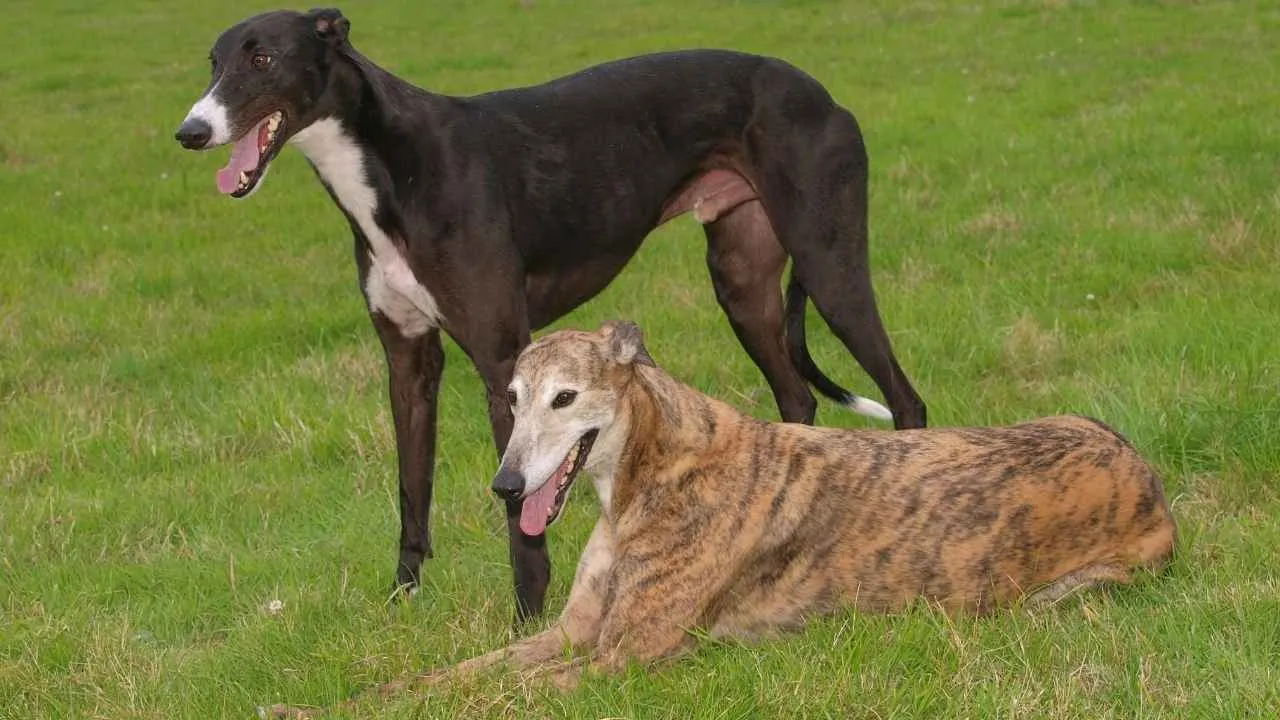
Also known as the world’s fastest dog, the Greyhound is a sleek and ancient breed with roots tracing back to ancient Egypt, though the modern form was refined in England.
The AKC describes the Greyhound as the ultimate canine sprinter—graceful, gentle, and noble, with a sweet temperament and an independent spirit. Graceful, tall, and slender, this hound can reach speeds of up to 45 mph, earning its reputation as a natural-born racer and chaser.
Greyhounds are classic sighthounds, bred to rely on sharp vision and lightning speed to pursue prey such as hares, foxes, and rabbits. Their lean build and aerodynamic frame make them exceptional hunters with a strong instinct to chase anything that moves.
This breed’s high prey drive stems from centuries of selective breeding for coursing and racing. Even retired racers often maintain that intense desire to sprint after small animals, a behavior deeply ingrained in their nature.
Despite their athleticism, Greyhounds are surprisingly gentle, calm, and affectionate at home. With proper training and controlled environments, their prey drive can be managed while allowing them to thrive as loyal companions.
Fun Fact: Greyhounds were admired by Alexander the Great, celebrated in Greek and Roman mythology, and even mentioned in Shakespeare’s Henry V.
2. Border Collie
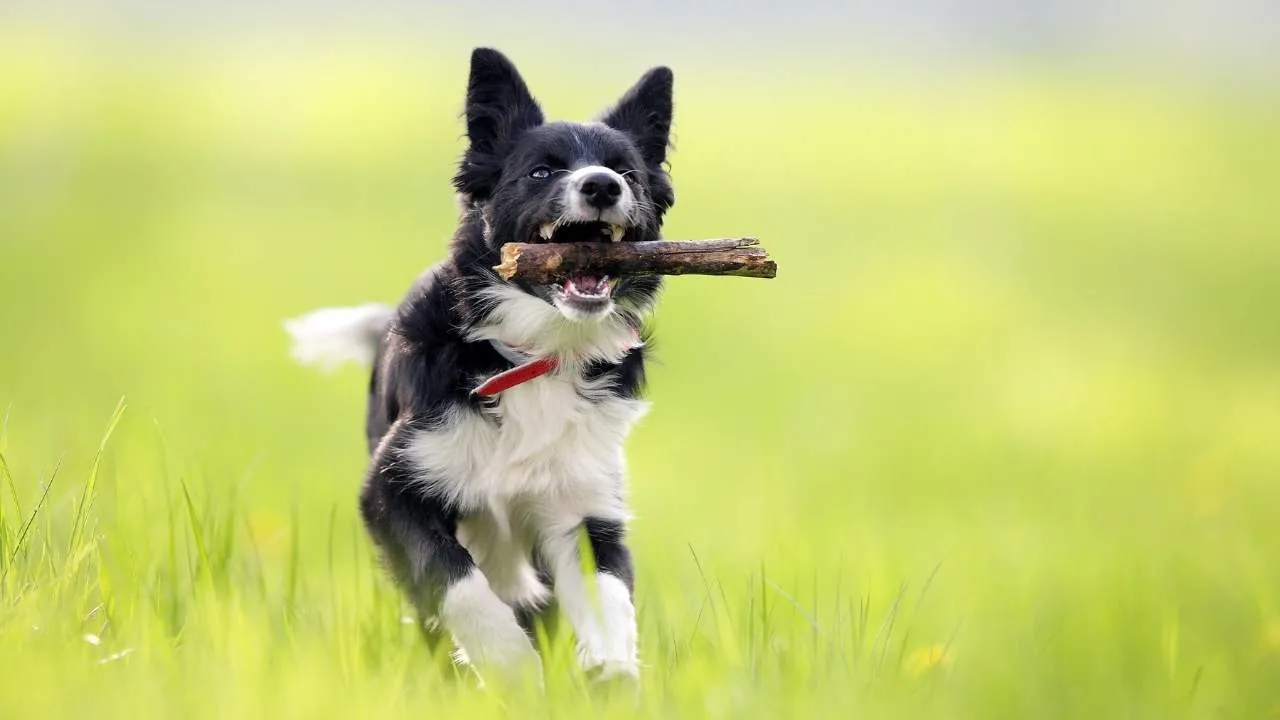
Also known as the Scottish Sheepdog, the Border Collie hails from the Anglo-Scottish borderlands. PetMD, citing the American Border Collie Association (ABCA), explains that Border Collies are energetic working dogs originally bred in Great Britain to herd livestock.
Renowned as one of the smartest and most energetic breeds, this medium-sized dog thrives on constant activity and mental stimulation, making it both a challenge and a joy for dedicated owners.
What makes the Border Collie exceptional in hunting and tracking is its instinctive control and sharp focus. Using a signature “herding stare,” it can direct sheep or any moving target with minimal movement, demonstrating extraordinary situational awareness and prey drive.
Their intelligence and stamina allow them to track scents, follow visual cues, and respond instantly to commands, traits deeply rooted in their herding ancestry. This agility and responsiveness make them stand out in dog sports and obedience competitions.
Because of their tireless energy and love for purposeful work, Border Collies need at least two hours of daily exercise to remain balanced. Without sufficient stimulation, their prey-driven instincts can quickly turn into restlessness or mischief.
Fun Fact: A Border Collie named Chaser once set a world record by identifying over 1,000 different toy names, showcasing the breed’s exceptional intelligence.
3. Siberian Husky
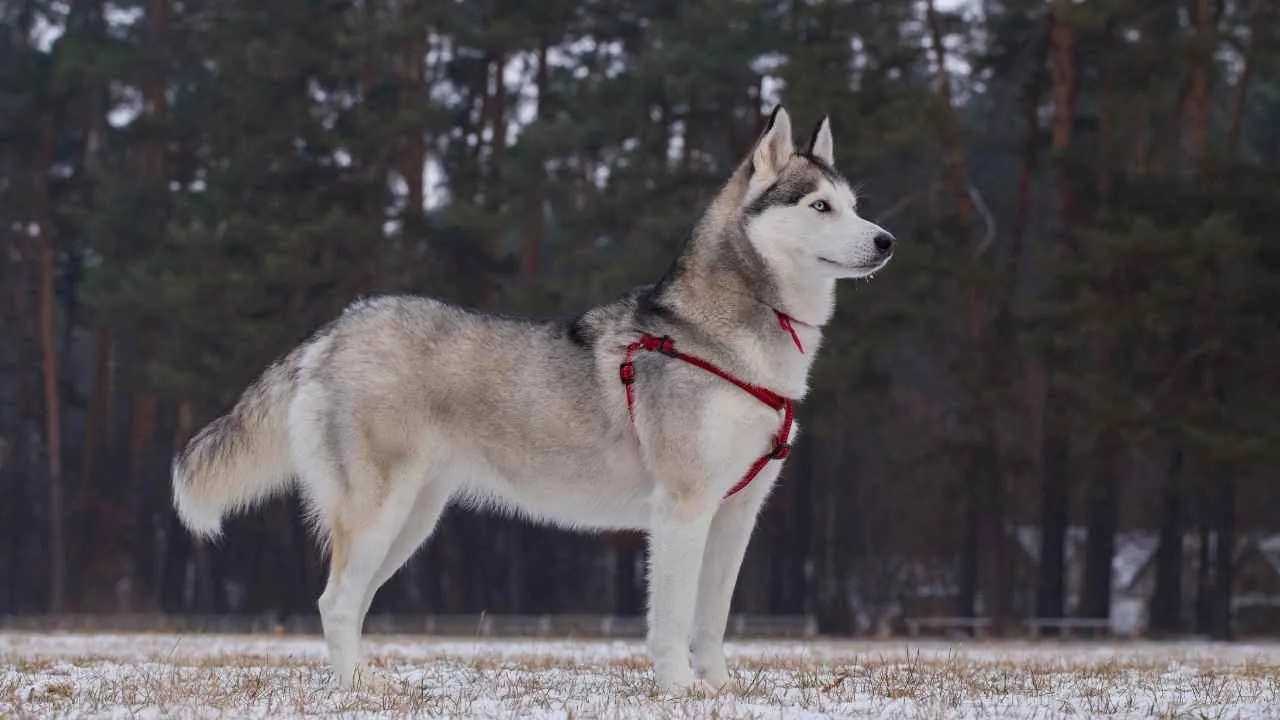
Also known as the Chukcha or Arctic Husky, the Siberian Husky is a striking breed originating from Northeastern Asia. Britannica explains that the Siberian Husky is a powerful, elegant, and friendly working breed that relied on it as both a sled dog and a loyal companion.
Known for their piercing blue or multicolored eyes and thick double coat, they were bred by the Chukchi people to pull sleds over long distances in harsh Arctic conditions. These intelligent, resilient dogs are as beautiful as they are energetic.
Their high prey drive stems from survival instincts honed in extreme environments where hunting small animals was vital.
Even today, that instinct remains strong; Huskies are quick to chase rabbits, squirrels, or cats without hesitation. This makes secure fencing and vigilant supervision essential for owners.
The breed’s independent and mischievous nature often mirrors their wild ancestry. Without enough exercise or mental stimulation, they can channel their energy into digging, chewing, or escaping enclosures in search of adventure.
Their desire to move and chase is practically unstoppable once triggered.
Despite their occasional stubbornness, Huskies thrive in active households where their drive is directed through sled pulling, agility training, or running.
Fun fact: Siberian Huskies can travel up to 100 miles a day in freezing temperatures when properly conditioned.
4. Australian Cattle Dog
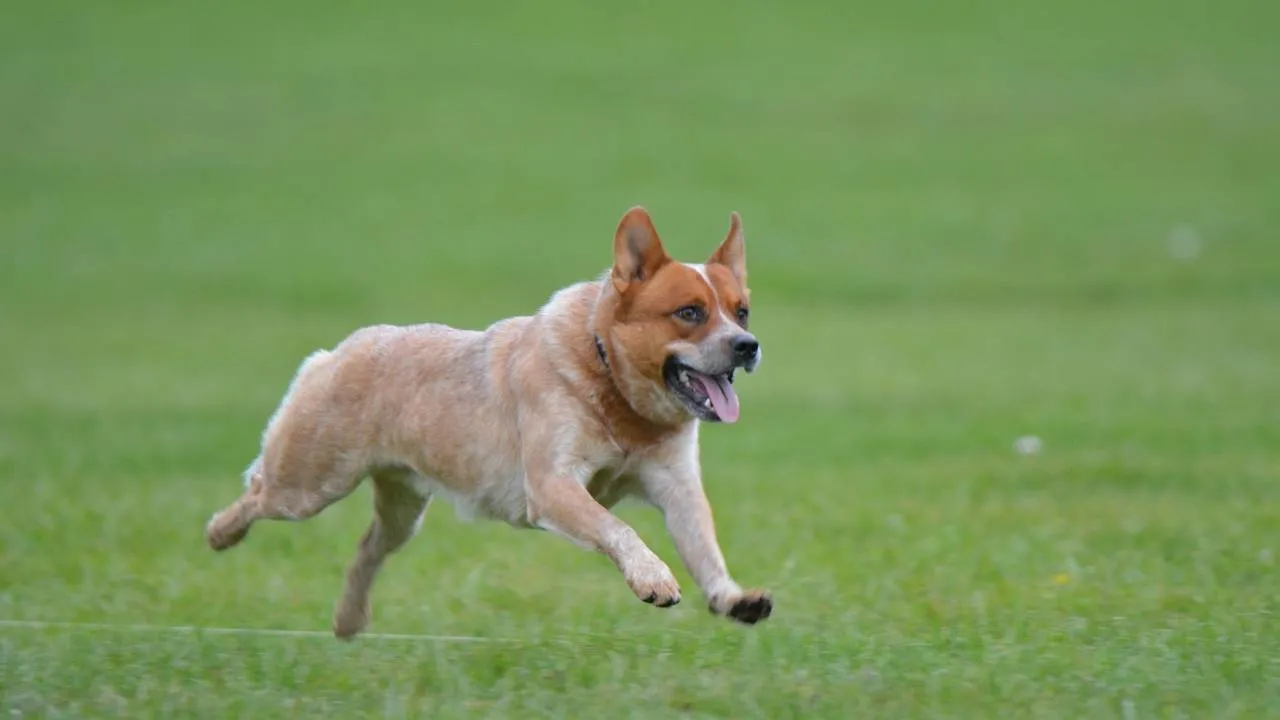
The Australian Cattle Dog—also known as the Blue Heeler or Queensland Heeler—is a compact, muscular herding breed developed in Australia to drive cattle across long distances and rugged terrain.
With a dense, weather-resistant double coat and remarkable stamina, these dogs were bred for endurance and intelligence, making them one of the toughest and most reliable working breeds.
Their herding heritage fuels an intense prey drive, often manifesting in quick reactions to movement. Whether it’s a running child or a darting squirrel, their instinct to chase and control is deeply ingrained.
This makes them both fascinating and challenging companions who require consistent mental and physical engagement.
Active owners thrive with this breed because Australian Cattle Dogs excel when they have a job—agility courses, fetch sessions, or herding activities all tap into their instincts. Without stimulation, they can become restless or destructive, driven by an unspent reservoir of energy.
Highly loyal and protective, they often form strong bonds with a single person, displaying unwavering devotion and attentiveness.
Fun fact: Australian Cattle Dogs are believed to have Dingo ancestry, which contributes to their intelligence, resilience, and exceptional prey drive.
5. German Shepherd
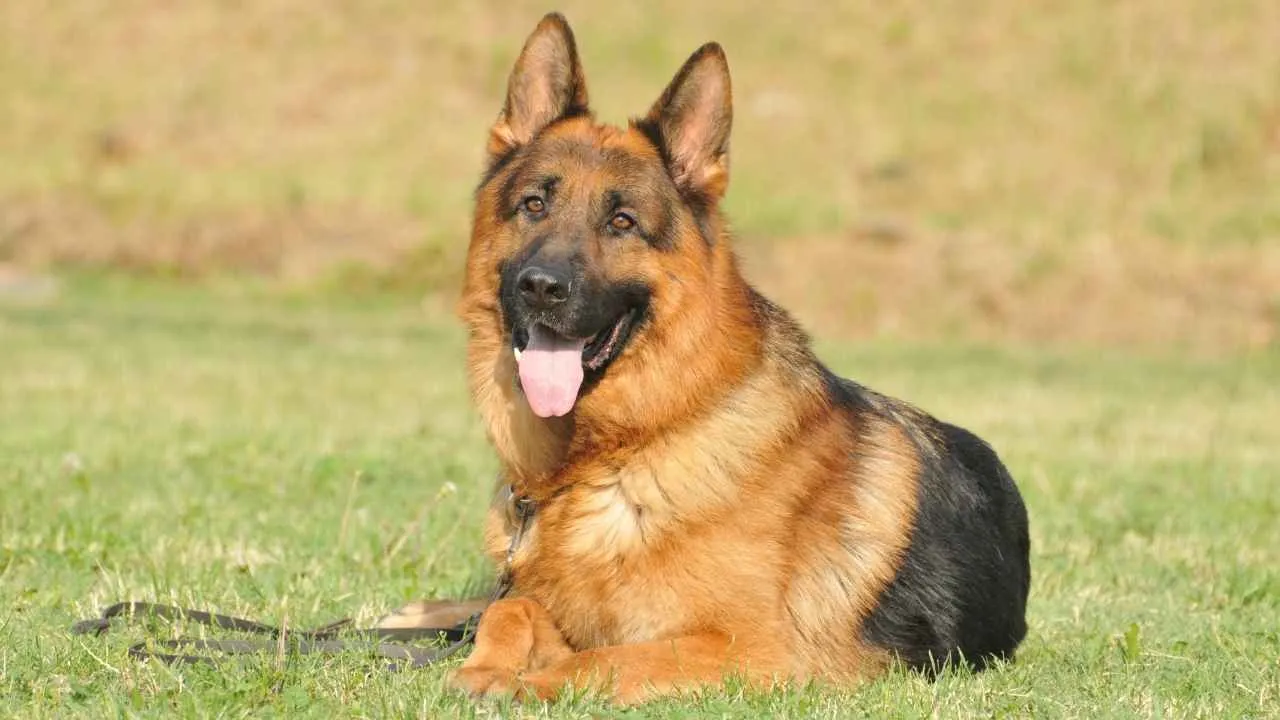
Also known as the Alsatian, the German Shepherd is a versatile working breed admired for its intelligence, strength, and confidence.
Originally bred to herd sheep, this dog’s keen instincts and alert nature make it one of the most recognizable and capable breeds in the world. Their loyalty and courage have earned them vital roles in police, military, and rescue operations.
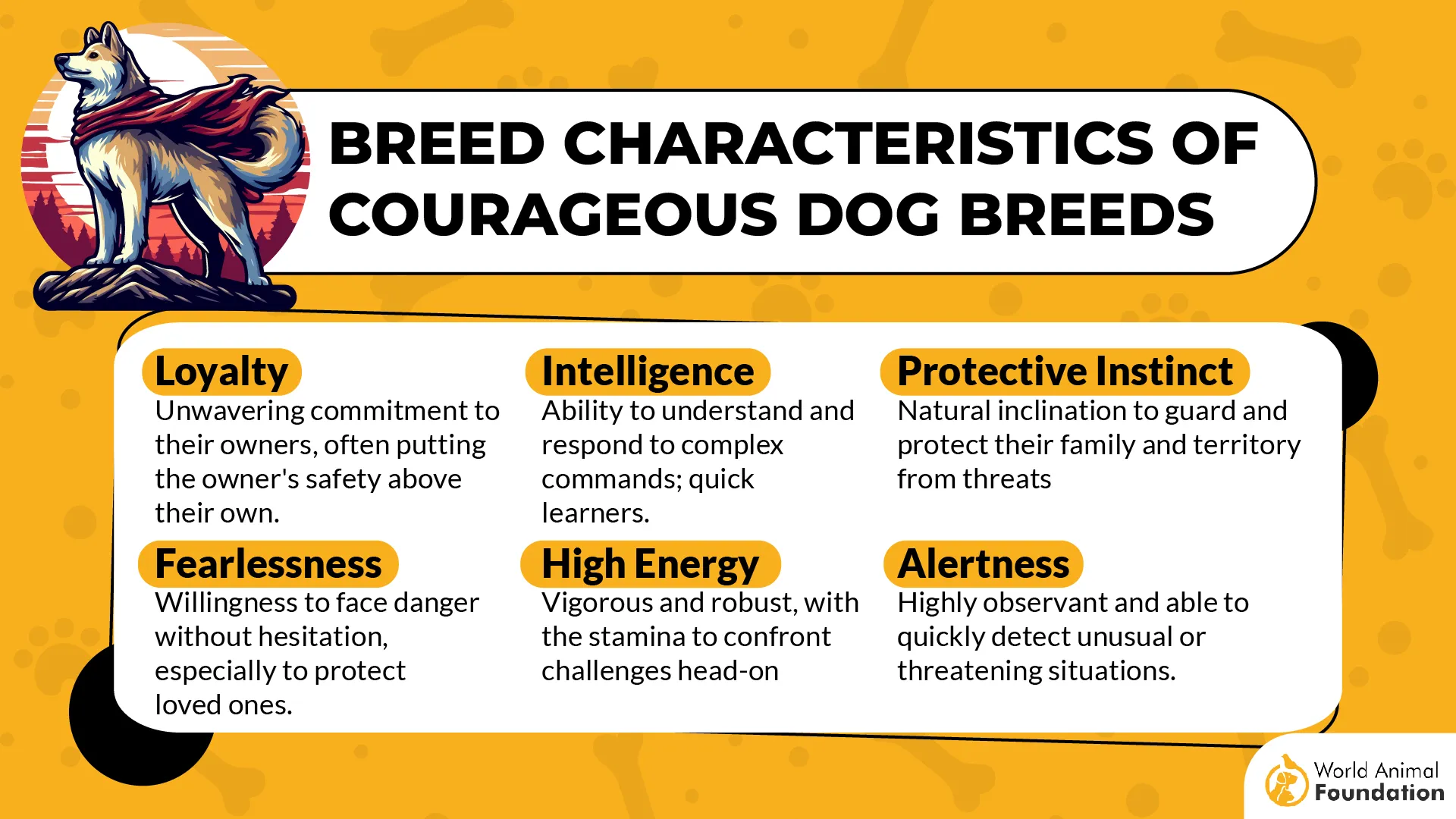
Because of their herding heritage, German Shepherds possess a naturally strong prey drive — a mix of curiosity, determination, and focus.
Their instinct to chase can surface in everyday life, especially around small animals or fast-moving objects, so early training and socialization are crucial to maintaining control.
Channeling their energy into purposeful activities helps manage that prey-driven enthusiasm. Obedience training, scent work, or agility exercises keep their minds sharp and redirect their drive toward positive outlets. A bored German Shepherd can easily become restless or destructive.
To keep this energetic breed balanced, provide consistent physical exercise and mental challenges. They thrive on structure, clear leadership, and meaningful tasks.
Fun Fact: German Shepherds were first developed in Germany in the late 1800s by Captain Max von Stephanitz, who aimed to create the ideal herding and working dog.
6. Jack Russell Terrier
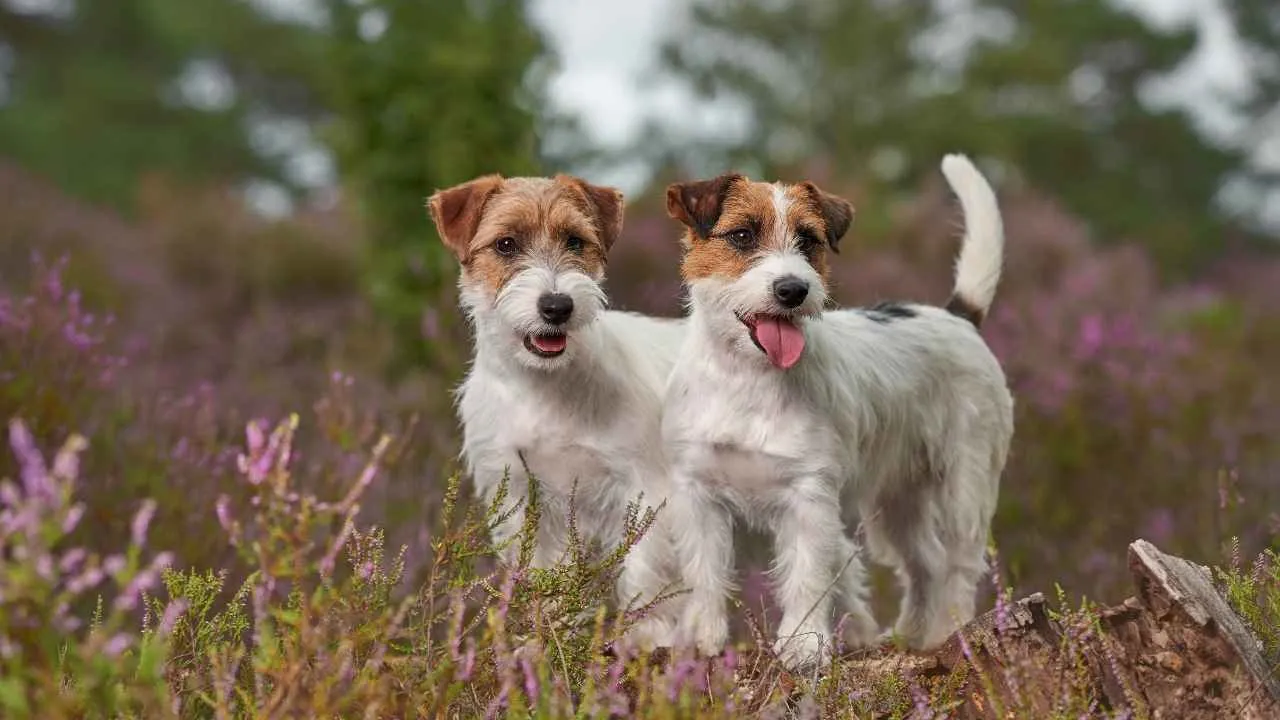
Also known as the Parson Russell Terrier or simply JRT, the Jack Russell Terrier is a small, fearless, and energetic dog originally bred for fox hunting. Compact in size but mighty in spirit, this breed combines athleticism with an unshakable determination that makes it one of the most spirited terriers around.
Born hunters, Jack Russells were developed to chase and flush foxes from their dens — a task that required keen instincts and lightning speed. Their high prey drive remains intact today, making them natural chasers of birds, squirrels, and even moving cars if not properly trained.
Despite their size, these dogs have boundless stamina and thrive on mental and physical challenges. Games like fetch or agility training keep them happily engaged and provide a positive outlet for their hunting energy.
While affectionate and fun-loving, their strong prey drive means they may not be suitable for homes with small pets such as rabbits or guinea pigs. With early socialization, though, Jack Russells can get along well with other dogs and make lively companions for active families.
Fun Fact: The Jack Russell Terrier can jump up to five times its own height — an impressive feat for such a small dog!
7. Weimaraner

Often called the “Gray Ghost” for its sleek, silvery coat and striking blue-gray eyes, the Weimaraner—also known as the Weimar Pointer—originated in 19th-century Germany.
Bred from Bloodhounds and other hunting dogs, this athletic and intelligent breed was created for hunting large game such as bears and deer, combining elegance with fearless stamina.
Their high prey drive stems from generations of breeding as gun dogs trained to hunt, point, and retrieve. This instinct can make them quick to chase small animals like rabbits or cats. Without sufficient outlets for their natural energy, they can become restless and easily distracted.
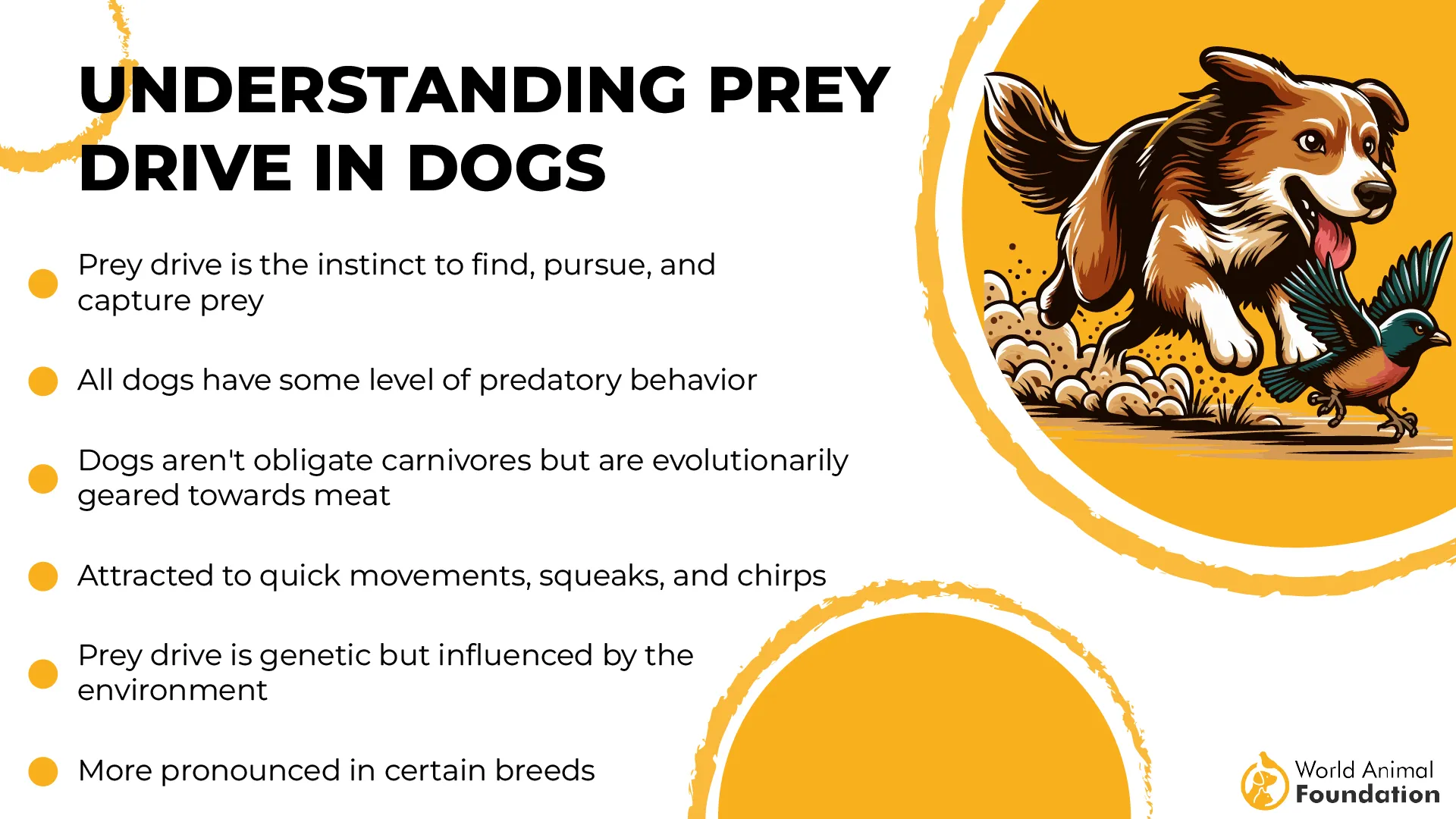
Effective training for Weimaraners focuses on mental stimulation and impulse control rather than simple physical exercise. Short, consistent sessions using positive reinforcement help them channel their instincts productively. Socialization from an early age also helps reduce their chase impulse.
Despite their hunting lineage, Weimaraners thrive as loyal family companions when their minds and bodies are kept busy. They form strong bonds with their owners and love adventure as much as affection.
Fun Fact: The Weimaraner earned its nickname “Gray Ghost” because of its stealthy hunting style and smooth, shadow-like movements in the field.
8. Rhodesian Ridgeback
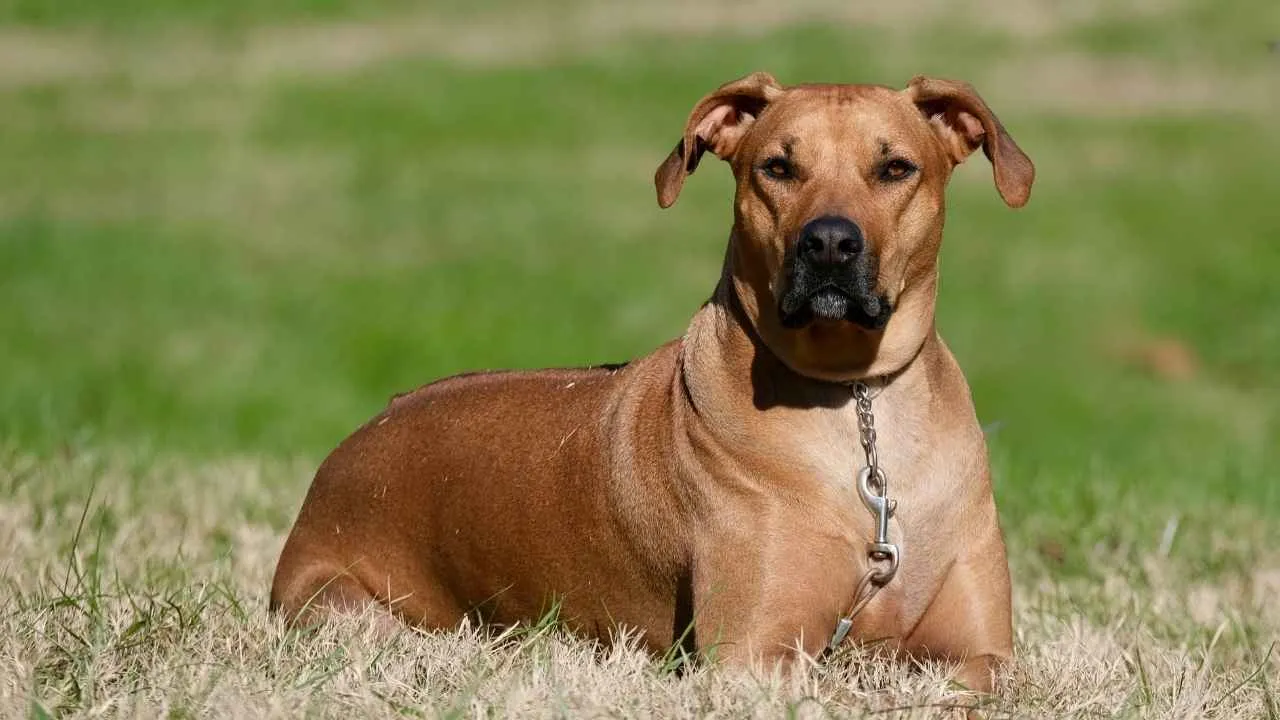
Also known as the African Lion Hound, the Rhodesian Ridgeback is a muscular and dignified breed originally developed in Rhodesia (now Zimbabwe).
Named for the distinctive ridge of backward-growing hair along its spine, this powerful dog was bred to track and hold lions at bay until hunters arrived.
Famed for its exceptional prey drive, the Ridgeback’s instinct to chase is deeply rooted in its hunting heritage. Small animals often trigger their pursuit instinct, making early training and controlled environments essential for responsible ownership.
These dogs thrive when both their minds and bodies are challenged. Activities like tracking, scent work, or agility drills not only satisfy their natural hunting instincts but also strengthen their obedience and focus.
Regular exercise, around 45 minutes of daily activity, and consistent, positive reinforcement keep them balanced and well-behaved. Despite their independence, Ridgebacks are affectionate with family and protective of their home.
Fun Fact: The Rhodesian Ridgeback was once prized for its ability to hunt lions, combining courage, speed, and stamina unmatched by most other breeds.
9. Afghan Hound
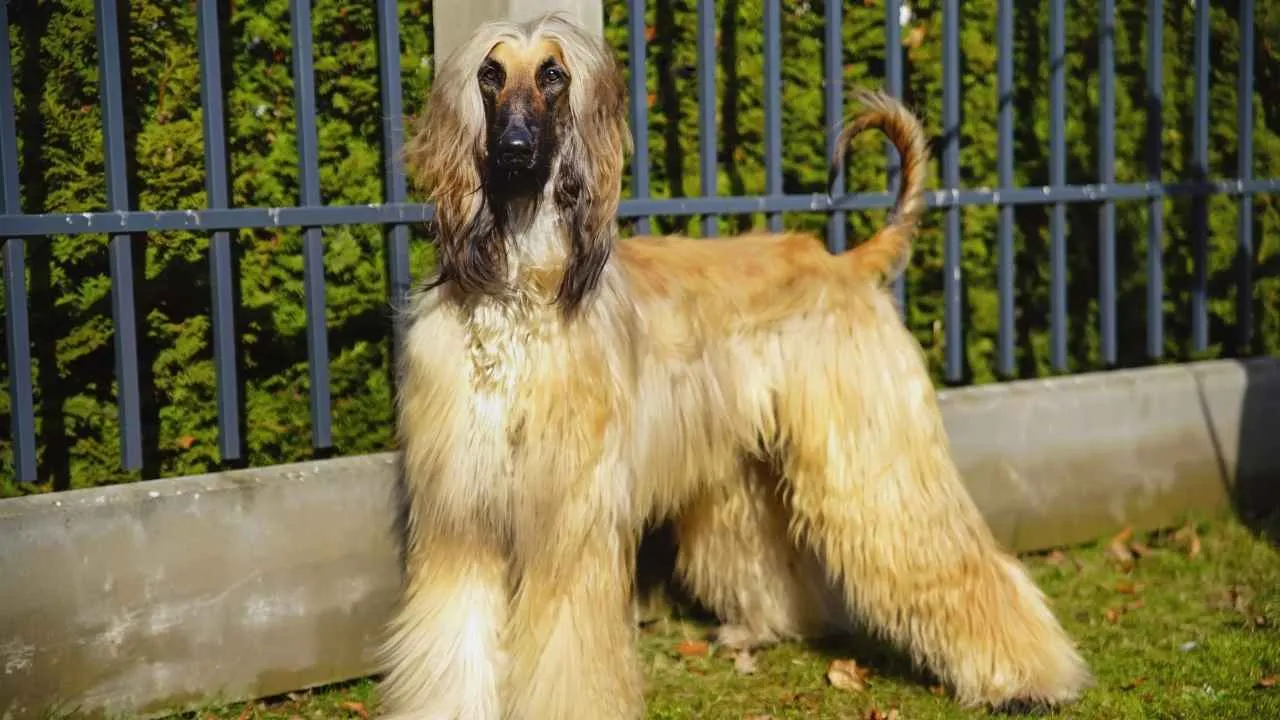
Also known as the Tazi or Baluchi Hound, the Afghan Hound is one of the most ancient and elegant sighthound breeds. Originating from the rugged regions of modern-day Afghanistan, Pakistan, and India, this breed is easily recognized by its flowing, silky coat and regal posture.
Beneath its refined appearance lies a fierce and capable hunter with an instinct that predates written history.
Bred to survive harsh mountain climates, Afghan Hounds were prized for their agility and endurance while pursuing swift prey such as deer and ibex. Their exceptional speed and keen eyesight made them invaluable companions to hunters navigating challenging terrain.
What sets this breed apart is its independent spirit and sharp prey drive. When something catches their eye, they can explode into motion with remarkable grace and focus, traits that make them both admired and demanding to train.
Despite their aloof demeanor, Afghan Hounds can be playful and affectionate at home. Their long coats require daily grooming, and due to their instinct to chase, they’re best walked on a leash.
Fun Fact: Afghan Hounds were once considered so rare and noble that only royalty could own them.
10. Saluki
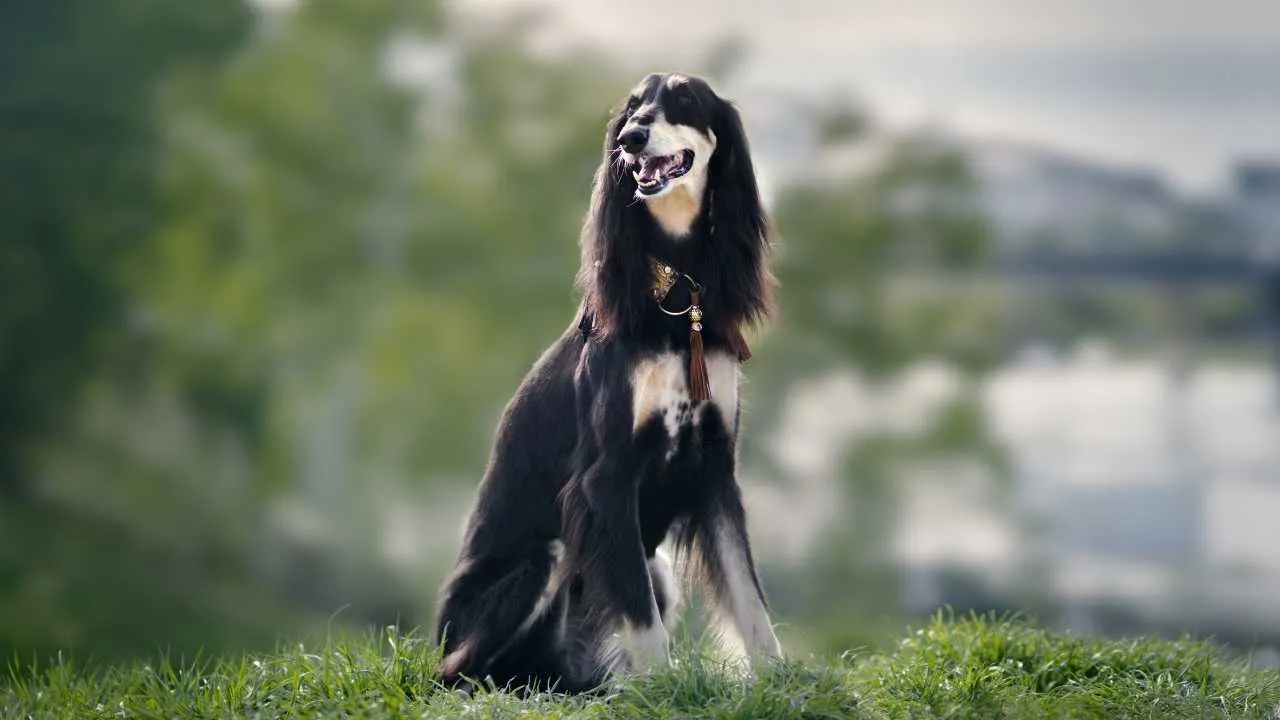
Also known as the Persian Greyhound or Gazelle Hound, the Saluki is one of the oldest domesticated dog breeds, tracing its lineage back to ancient Egypt and the Middle East—well before the construction of the pyramids.
Tall, lean, and graceful, this breed’s elegant frame hides a powerful, enduring hunter that has thrived in harsh desert environments for millennia.
Bred for speed and stamina, the Saluki was once used by nomadic tribes to chase down gazelles and hares across vast terrains. Its exceptional eyesight and lightning-fast reflexes make it a natural-born sighthound with a prey drive that’s nearly impossible to suppress.
Even today, that instinct remains strong, meaning small animals can easily trigger its pursuit mode.
Managing this innate urge requires consistency and structure. Salukis thrive in fenced areas where they can safely unleash their energy and chase without risk. Daily exercise, preferably long runs or lure coursing, helps satisfy their hunting instincts while keeping them mentally balanced.
Despite their independent streak, Salukis form deep bonds with their owners and enjoy comfort after exertion.
Fun fact: Ancient Egyptians revered them so highly that they were often mummified to accompany pharaohs into the afterlife.
Conclusion
A dog’s prey drive is a powerful reflection of its heritage and purpose, showing just how closely modern pets are linked to their wild ancestors.
While certain breeds possess a high prey drive, it doesn’t make them unmanageable; it simply means they need the right outlet for their dog’s instinct to chase and explore.
Providing consistent training, mental stimulation, and exercise can help these dogs coexist peacefully with other animals and thrive in home environments.
For many dogs, such as the German Shorthaired Pointer and other breeds with strong hunting backgrounds, having space to run in securely fenced areas is essential.
These high-energy dogs are happiest when their instincts are guided with care and understanding.
Appreciating the natural drive that fuels these remarkable animals allows owners to celebrate their athleticism, loyalty, and history, transforming what could be a challenge into one of the most rewarding aspects of dog ownership.


